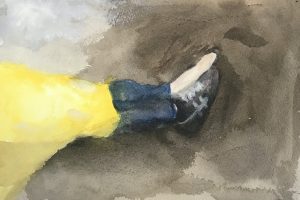We’re living longer, and this means by the time we’re suited for aged care, so too will be more people than ever before.
The number of people in permanent aged care in Australia is expected to triple in the next 35 years, from 225,000 today to 700,000 in 2050.
Recently, several reforms were made to the aged-care sector.
The reforms addressed the distinction between low and high-care, up-front accommodation costs, retention amounts, daily fees, calculation of assets and assessment of home values – the list goes on.
An already complex aged-care industry has become even more complicated. For example, the Centrelink questionnaire alone, which must be filled in before someone can even enter aged care, is more than 30 pages long, with 144 questions.
The aged-care industry is very complicated and many decisions must be made, often involving large sums of money.
Here, aged care consultants John Rawling and Rod Horin answer the ten most common questions that we hear, and the answers.
Why is aged-care so expensive?
A: Aged-care is very labour intensive, and land and buildings are expensive to buy and maintain. The owners of such facilities expect to make a return on their investment. From a client’s point of view, typical fees include accommodation deposits and charges, daily fees, extra services fees and means-tested fees.
Is the accommodation deposit negotiable?
A: Yes. Accommodation deposits (known as RADs, Refundable Accommodation Deposits) can be as high as $2 million to secure a bed in an aged care facility. In many cases these RADs are negotiable, and can be as much as halved. Willingness to negotiate on RADs depends very much on the demand for beds – and the supply of beds – in a particular aged care facility.
What alternatives are there for paying the RAD?
A: Many aged care facilities prefer the RAD be paid as a lump sum up front, However it is possible to pay interest payments only or pay with a combination of lump sum and interest payments. A bank guarantee is not an alternative.
Will the family get all of the RAD back?
A: In a government accredited aged care facility, the accommodation deposit is fully government guaranteed. Before July 2014, the accommodation bond repaid to the family would be reduced by retention amounts deducted by the aged care facility. Since July 2014, any lump sum paid as a RAD is now generally repaid in full at the end of the care period.
What is the Centrelink Fee?
A: The Centrelink Fee is a means-tested fee set by the government and collected by the aged care facility. It is an attempt by the government to ask residents with the financial capacity to contribute to the cost of care. This fee can range from nothing to a maximum $241.92 per day.
Why is the Centrelink Fee so high and how do I reduce it?
A: The Centrelink Fee, otherwise known as the Means-Tested Fee, is based upon the income and assets of the aged-care resident, so it increases as assets and deemed income increase. For example, a person on a part Age Pension with assets totalling $200,000 and deemed to be earning just over $27,500 per year will pay $2.22 per day ($812 per year) in aged care, while a person with assets totalling $1,200,000 and deemed to be earning just over $38,000 per year will pay $68.66 per day ($25,061 per year). Two key ways of reducing the Centrelink Fee include paying a higher RAD or buying an aged care annuity. There is no link between the actual cost of a person’s care and the Centrelink Fee they pay.
Why does the Government tax people in aged-care?
A: The standard daily care fee for a resident in an aged-care facility ($47.86 per day) is set at 85 per cent of the full Age Pension. However it does not cover the full care costs of the resident. The Government pays a subsidy for each resident’s care needs to make up the shortfall. The Centrelink Fee enables the Government to provide this subsidy.
What is the Extra Services Fee and should I pay it?
A: The Extra Services Fee, which can be as much as $120 per day, is supposed to give the patient extra services, including more attention and access to people like podiatrists, hairdressers etc. If your aged-care facility is charging an Extra Services Fee, you should ask what services are being delivered and assess whether or not you are receiving value for money.
Paying the RAD will impact on my cash flow. What strategies are there for dealing with this?
A: It is possible to negotiate to pay some or all of the daily fees from the RAD. This means of course that less of the RAD will be returned at the end of the care period.
What implications are there for my social security or pension?
A: The RAD is an excluded asset for social security purposes. Therefore, in some cases, where existing cash is used to pay for a RAD, it can result in a new or increased pension entitlement. More often, a family home is sold to fund the RAD. In this case, while the home is excluded, the proceeds from its sale are counted as an asset. As a result, the cash remaining after paying the RAD can often result in a pension being reduced or lost entirely. However there are ways to maintain, or even increase, one’s current entitlements.
John Rawling and Rod Horin are aged-care consultants at Joseph Palmer & Sons (Vic), investment managers and aged-care specialists.























Add Comment